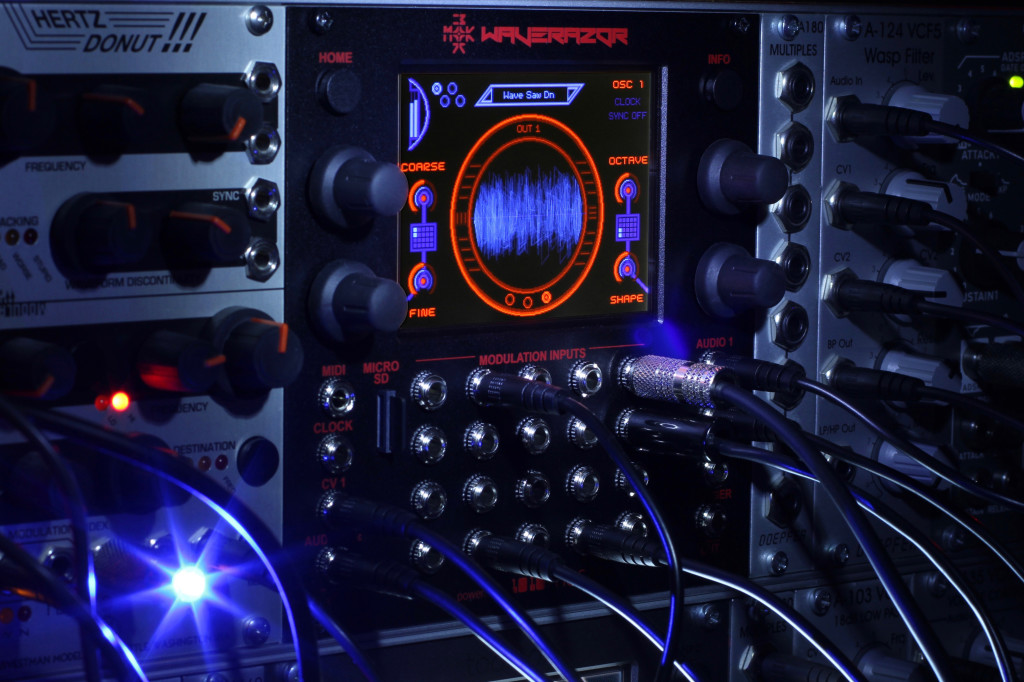“You can’t just do another boring oscillator” is now a mantra in the Eurorack world. Well fine – here’s this. It looks cyperpunk futuristic, and shows how hardware and software might continue to merge.
Here’s a terrific walkthrough from Ken Flux Pierce Fluxwithit:
It’s funny to me that people stress out about the absence of entirely new synthesis methods. The variations on those synth methods – subtractive, FM, additive, physical modeling, and so on – mean a lot. Sure, some version of everything I just mentioned already existed in the 1960s. But you’d still handily choose a 2019 studio over a 1969 one. Or to take acoustic instruments as an example, all kinds of instruments can be classified, idiophones (stuff that vibrates) or have a reed and mouthpiece. How they go about it is significant.
How the MOK Waverazor Dual Oscillator module goes about synthesizing sounds is taking wavetable synthesis, dividing it into slices, and then adding a ton of modulation capabilities. That doesn’t sound even like other wavetable synths, exactly, because the MOK approach lets you glitch and morph your way through harmonic content in novel ways.
This also gives you what they call Multi-Sync and Mutant AM. Multi-Sync combines traditional hard sync with surgical multiple sync points; Mutant AM is what happens when amplitude modulation collides with sequencing and slicing.

And it’s equally significant how all of this is controlled. The Eurorack module form of this is a unique hybrid – love-child of a desktop computer plug-in and a tricked-out analog module. So you get the visual display, with touchscreen navigation, guiding your way through all that wavetable madness with your fingertip, with visuals that seem to me like something out of The Last Starfighter.
In addition to lots of CV patch points, the makers have also been thoughtful enough to add MIDI and MIDI clock I/O directly – since that now fits on a minijack. (Oh yeah, they’re breaking all kinds of conventions.) Add the MIDI business to 20 inputs for CV, plus another two for high-resolution tracking – which can also be used for FM.
It’s blasphemous as far as what Eurorack norms looked like just a few short years ago. But it looks fantastic.
And it makes sense – the team is Rob Rampley, Taiho Yamada and Chris Compton, who worked on instruments like the Alesis Quadrasynth, QS8, Andromeda, Ion, Micron, Fusion, and others.
More details:
And specs:
- Patented oscillator design dynamically slices and recombines waveforms
- 2 independent oscillators
- Detailed and responsive multi-touch screen
- 2 high resolution CV inputs
- 20 modulation CV inputs
- Modulation input metering
- MIDI input (TRS, Arturia compatible)
- Clock input for BPM sync of wavesequences
- Audio input for slicing external sound sources
- 3 Audio outputs (Audio 1, 2 and Mix)
- Trigger output for external oscillator sync
US$599.95, but … there’s a lot of module in this module.